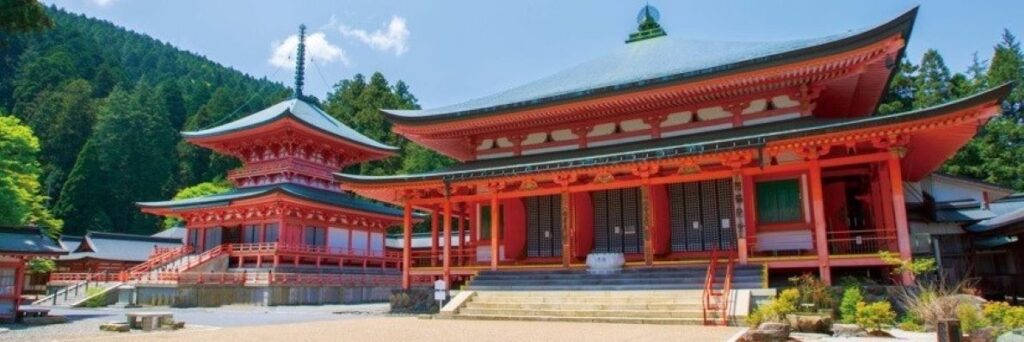In preparation for the return of tourists to Japan after the pandemic, three major railway companies in Japan’s Kansai region are collaborating to promote in-depth travel experiences featuring popular travel destinations in the area as well as less-crowded spots that are gaining attention due to the pandemic.
The itineraries can be taken via the Keihan, Kintetsu, and/or Nankai trains, and include:
Uji City (Kyoto Prefecture)
In Uji City, Kyoto Prefecture, the home of matcha (green tea powder), the world heritage site Byodoin is renowned for its four-season scenery, including cherry blossoms in spring, wisteria in early summer, and autumn leaves in autumn.
Many valuable national treasures are also stored in Hoshokan Museum. At the Taihoan tea house, operated by Uji City, one can experience the ichi-go ichi-e (one time, one meeting) spirit during a of Japanese tea ceremony for a reasonable price.
The Historical Park of Tea and Uji Town, located next to Keihan Uji Station, was fully opened on Oct. 1, 2021. In addition to a garden and resting area, there is a museum where visitors can learn about the history of Uji tea, and a restaurant that serves matcha sweets, making it a place where people can interact about Uji tea and promote tea culture.
Otsu (Shiga Prefecture)
Located in Otsu City, Shiga Prefecture, east of Kyoto Prefecture, is the sacred site of Japanese Buddhism, Hieizan Enryakuji Temple, a World Heritage Site opened in the 8th century by Saichō (Dengyō Daishi), covering an area of 1,700 hectares. The Sakamoto Cable (Car) whisks visitors to the top of the mountain, revealing spectacular views of the surrounding forest and Lake Biwa, the largest lake in Japan. At Enryakuji Temple, visitors can try refined Buddhist (vegetarian) cuisine that uses local ingredients and no animal ingredients. In addition, one can experience the life of a monk by participating in Zen meditation, sutra copying, and shukubo (temple lodging).
In Otsu City, there is Ogoto Onsen (hot spring) and a plethora of nearby ryokans (Japanese inns) that have guest rooms with private hot spring baths (including open-air hot spring baths), ideal for taking in the tranquil scenery of Lake Biwa while soaking in the hot spring without going outside. With a history of 1,200 years, Ogoto Onsen is known as one of the best hot springs in Japan and is especially popular among female visitors. The hot spring is highly alkaline with a pH value of 9.0. Benefits include skin smoothing, muscle pain relief and recovery from fatigue.
Yoshino (Nara Prefecture)
The Yoshino area in Nara is famous for Mount Yoshino, a sacred place for its cherry blossoms. The local culture-related industries of Yoshino are closely related to the surrounding nature. Sake brewing is another thriving endeavour, including the Miyoshino Sake Brewery, which uses a traditional brewing method using natural yeast that are placed in vats made of local Yoshino cedar wood. The local sake brand Hanatomoe, which is brewed in a wooden vat, is deeply appreciated by sake lovers in Japan and abroad for its woody scent, natural acidity, and powerful flavour.
Kinpusenji Temple, the symbol of Yoshino, is the central training place of the traditional Japanese ascetic tradition of Shugendō, and the Zao-do main hall there enshrines the Buddha Zao Gongen.
Yoshino can be reached from Osaka via the luxurious Blue Symphony sightseeing train operated by Kintetsu.
Sakai (Osaka Prefecture)
Sakai City in Osaka Prefecture is known for its tea ceremony culture and industries such as traditional cutlery with renowned brands like Sakai knives. The World Heritage Site of Mozu and Furuichi Tumuli Clusters includes the Tomb of Emperor Nintoku as well as the Kami Ishizu Misanzai Kofun Tomb. The visitor centre there introduces the history and culture of the tumuli clusters, and aerial images are shown in a 3D theatre located inside the centre. After being registered as a World Heritage Site in 2019, the Mozu and Furuichi Tumuli Clusters has been attracting attention from Japan and abroad, and related organizations are considering using hot air balloons to provide tourists with a complete aerial view of Sakai City and the tombs.
Kōyasan (Wakayama Prefecture)
Kōyasan (Mount Kōya), located in Wakayama Prefecture, is the head temple of the Shingon sect of Buddhism, founded by Kukai (Kobo-Daishi), and has a history of over 1,200 years. Of the 117 temples, starting with Kongobuji Temple, Danjō-garan and Okunoin are the most popular among tourists. In Kōyasan, where there are many scenic spots and historical architecture, there are shukubo (temple lodging) where guests can stay overnight, experiencing the solemn and sacred feel of religion and simple lifestyle of monks by enjoying Buddhist (vegetarian) cuisine in the morning/evening and participating in the morning service of monks.
Travellers on the Tenku (Nankai Electric Railway) sightseeing train, which travels through a mountainous terrain with a maximum height difference of 443 m. between Koyasan and Osaka, will find the ever-changing scenery of the surrounding forests and valleys throughout the four seasons.

